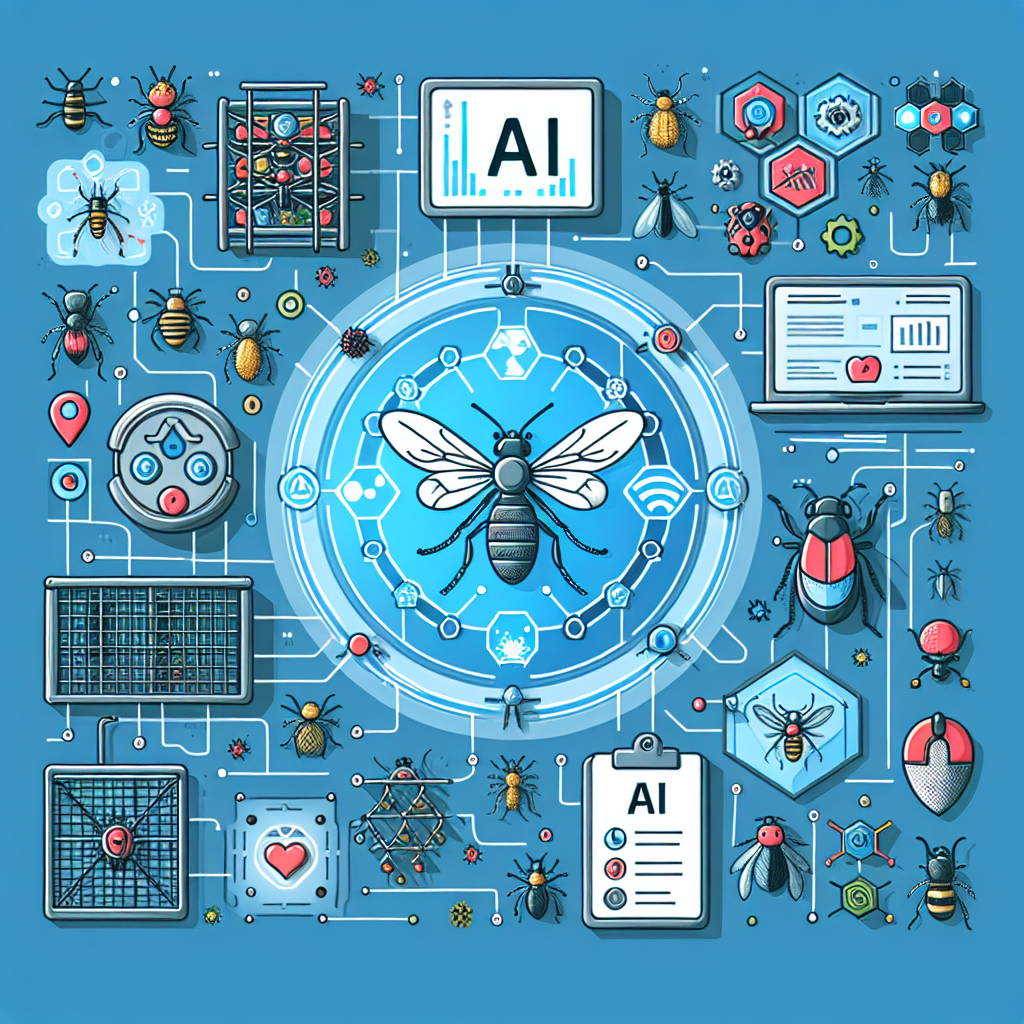Pest control is a critical aspect of agriculture and public health, as pests can cause significant damage to crops, spread diseases, and pose a threat to human health. Traditional methods of pest control have relied on the use of chemical pesticides, which can have negative impacts on the environment and human health. In recent years, there has been a growing interest in leveraging artificial intelligence (AI) to create more precise and effective pest control strategies.
AI has the potential to revolutionize pest control by enabling more targeted and efficient methods of pest management. By harnessing the power of AI, farmers and pest control professionals can better understand pest populations, predict outbreaks, and deploy control measures in a more precise and timely manner. This approach, known as precision pest control, can help reduce the reliance on chemical pesticides and minimize the environmental impact of pest management practices.
One of the key benefits of leveraging AI for pest control is the ability to collect and analyze large amounts of data to gain insights into pest populations and their behavior. By using sensors, drones, and other IoT devices, farmers can monitor pest activity in real-time and make informed decisions about when and where to apply control measures. AI algorithms can then analyze this data to predict pest outbreaks and recommend the most effective control strategies.
Integrated Pest Management (IPM) is a holistic approach to pest control that combines multiple strategies, including biological control, cultural practices, and the judicious use of chemical pesticides. AI can enhance IPM by providing farmers with the tools they need to implement a more comprehensive and effective pest management plan. By integrating AI technologies into IPM programs, farmers can optimize the use of resources, reduce pesticide use, and improve crop yields.
One example of how AI is being used for precision pest control is in the monitoring and control of insect pests in agriculture. Insect pests can cause significant damage to crops, and early detection is crucial for effective control. AI-powered sensors can be used to monitor insect populations in the field, allowing farmers to detect pest outbreaks before they become widespread. This information can then be used to trigger the release of natural enemies, such as parasitic wasps, to control the pest population.
Another example of AI-powered pest control is the use of drones to apply targeted control measures. Drones equipped with AI algorithms can scan fields for signs of pest damage and then apply pesticides or other control measures only to the affected areas. This targeted approach minimizes the use of chemicals and reduces the risk of harming beneficial insects and pollinators.
AI can also be used to develop predictive models for pest outbreaks. By analyzing historical data on pest populations, weather patterns, and crop conditions, AI algorithms can forecast when and where pest outbreaks are likely to occur. This information can help farmers proactively implement control measures before the pests become a problem, reducing the need for reactive treatments.
Overall, leveraging AI for precision pest control and integrated pest management offers numerous benefits for farmers, pest control professionals, and the environment. By using AI technologies to collect and analyze data, predict pest outbreaks, and implement targeted control measures, stakeholders can improve the efficiency and effectiveness of pest management practices while reducing the environmental impact of pesticide use.
FAQs:
1. How does AI help in pest control?
AI helps in pest control by enabling more targeted and efficient methods of pest management. By harnessing the power of AI, farmers and pest control professionals can better understand pest populations, predict outbreaks, and deploy control measures in a more precise and timely manner.
2. What are the benefits of using AI for pest control?
Some of the benefits of using AI for pest control include more targeted control measures, reduced reliance on chemical pesticides, improved crop yields, and minimized environmental impact.
3. How can AI be integrated into Integrated Pest Management (IPM) programs?
AI can be integrated into IPM programs by providing farmers with the tools they need to implement a more comprehensive and effective pest management plan. By using AI technologies to collect and analyze data, predict pest outbreaks, and implement targeted control measures, farmers can optimize the use of resources, reduce pesticide use, and improve crop yields.
4. Are there any examples of AI-powered pest control technologies?
Yes, there are several examples of AI-powered pest control technologies, such as sensors, drones, and predictive modeling algorithms. These technologies can help farmers monitor pest populations, apply targeted control measures, and predict pest outbreaks.
5. What are the challenges of using AI for pest control?
Some of the challenges of using AI for pest control include the cost of implementing AI technologies, the need for specialized training and expertise, and potential privacy concerns related to the collection and analysis of data.

